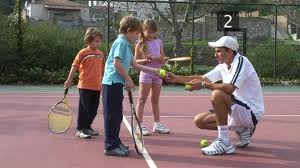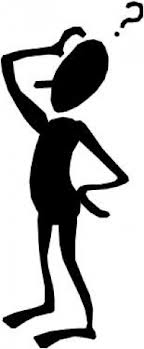Technique that is so simple!
We are reminded often enough that tennis technique is frightening. It’s indeed difficult to learn as a beginner. To become competent as a match player apparently requires technical precision working over long periods at high speed. Let me take away some of the mystery.

Perfect technique does exist. Copy it.
We must get this in perspective. We might compare tennis with soccer, or darts, or snooker, or golf, and I don’t think we should exaggerate the technical complexity of tennis. Every sport has technical aspects to master, and depending on how you play those sports, you must master more or less all of those aspects.
The real problem with tennis, and specifically learning tennis, is that very soon after learning how to hit a tennis ball, you need a court and a rallying partner, preferably a little bit better than you. To maintain the availability of a court and suitable practice partner is a problem quite specific to tennis, and a far bigger problem than technique.
Find the right tennis club for you.
As a tournament player coach, I can’t recollect having to make any significant technical changes to any of my players. Certainly none that have required more than a couple of sessions training to correct. This is indeed minor. How can we explain this?
Is it that I simply choose to overlook technical fragility, knowing that it would be tricky, with a confirmed tournament player, to make changes? Is it my own fear that the player will struggle to make the adjustments and lose confidence in both himself and me? Is it that I’m simply not a very “technical” coach?
Maybe a little bit of all of this is true.

Now you need the right coach
In my coaching career I have been confronted with players who haven’t had ropey technique. Learning tennis in clubs supplies players, in fact in my opinion, often over-supplies players with technical training. So my work as a technician is, or should be, relatively easy.
The fact is that most players I meet have far more serious problems, particularly mental, physical and strategic. These require work on the practice court, and plenty of mental repositioning that are rarely achieved in a couple of training sessions. I attack these failings with great energy and persistence. And I may even ignore what I’d see as technical niggles to combat other problems.
So what technical work do I do? A very common “technical” problem is a player who hits a forehand cross court OK in practice, but in game situations, misses his forehand cross courts. There is possibly a technical aspect to the player missing these cross courts, but the best solution to what is a spatial problem on the tennis court (a spatial problem being one where a player isn’t using a certain part of the court), is to practice it thoroughly. It’ll also need integrating into matchplay which is almost always a bigger problem. And the curiosity is that almost always the technical glitches iron themselves out by dealing with such a problem indirectly, by putting it into the most pressurised situation possible.
Upgrade to pressure tennis
Let me refer to a couple of players I can picture clearly now who caused me technical headaches.
The first was a wonderfully elegant, classical player who I knew in my youth. He was older than me, a little bit old school in his habits, but one of the cleanest hitters I have ever known. He hit flat skimming balls with no effort. Everyone loved practicing with him because his technical ease meant he could hit balls all day. And he loved to show off his superb repetition and control.
But then he’d play a match. His balls would be all over the place. I remember the club coach shaking his head and trying to get him to spin the ball, get better margins on his shots. The coach was fighting against nature of course, and, in my view, made the matter worse. I used to play with this player frequently and he used to ask me about technique. Even then I loved his game, so I told him to just play in matches how he practiced. But other coaches had got into his mind.

Today, I would still coach such an “old-fashioned’ player in the same way. Don’t change anything. Adapt his hitting to matchplay. Practise matchplay routines.
Matchplay by going on tour
Not long ago I was teaching a junior with a typical left-hander’s game, a wristy, spinny forehand, a safe but non aggressive backhand. The problem was the serve. Lefties have a great advantage in tennis. Not only do they serve their swinging serves into the right-hander’s backhand corner, but it is often the big point side. My player could slice serve the ball well, but he just wouldn’t. He preferred to hit flatter balls, or put a softer topspin on the ball for safety.
His club coach, a right-hander, had taught him to serve like this. I suggested to the coach doing lots of work on slice serves, but it never happened. Then I had a chance to go away with the player on a tournament tour. I watched him play one match, that I didn’t like. But I sat him down afterwards, and I said that he should be setting up his service game points strategically with heavy slice serves from the right and the left court. And he should not be happy until he could deliver this.
Working at your tennis in an academy
In his next match he corrected this immediately, maybe just to please me. But it went like a dream. He was winning his points in very different ways, and even started hitting aggressive backhands too!
A short while later I came across him playing a club match back home with his old coaches, and he had once again gone back to his old ways. This time I said nothing to him.
Getting into your tennis mind
Tour Coach -
on this site!
